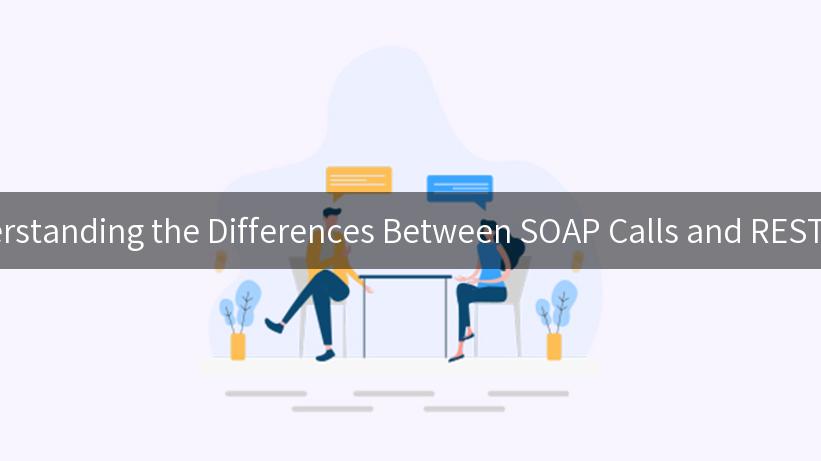
When integrating diverse services and applications, a common question arises among developers and businesses alike: Should we use SOAP calls or REST APIs? Both of these web service communication protocols serve the purpose of providing interoperability and interoperability among different systems. However, they are built on different philosophies, each having its own strengths and weaknesses. In this article, we will delve into the core differences between SOAP and REST, examining their functionalities, use cases, performance, and the role of AI Gateway technologies like Kong and API version management in their deployment.
What Are SOAP and REST?
SOAP:
SOAP (Simple Object Access Protocol) is a protocol designed for exchanging structured information in the context of web services. It relies heavily on XML for message format and typically uses HTTP or SMTP for message negotiation and transmission. SOAP is known for its robustness, built-in error handling, and security features.
REST:
REST (Representational State Transfer) is an architectural style that utilizes a lightweight protocol, usually HTTP, to facilitate communication between client and server. RESTful services allow for various formats such as JSON, XML, or even HTML, making it a more flexible option compared to SOAP.
Key Differences
| Feature |
SOAP |
REST |
| Protocol Type |
Protocol |
Architectural Style |
| Message Format |
XML |
XML, JSON, or HTML |
| Statefulness |
Stateless |
Stateless |
| Standards |
Strict standards (WSDL, WS-Security, etc.) |
Flexible standards |
| Security |
Built-in security protocols (SSL, WS-Security) |
Often uses HTTPS |
| Error Handling |
Built-in error handling |
Custom error handling |
| Performance |
Generally slower due to XML overhead |
Lightweight and faster |
SOAP Calls vs REST
Advantages of SOAP
- Security: SOAP has built-in security protocols (WS-Security) that are comprehensive and reliable for sensitive transactions.
- ACID Compliance: Being transactional, SOAP can handle complex transactions, ensuring ACID (Atomicity, Consistency, Isolation, Durability) properties.
- Asynchronous Processing: SOAP supports asynchronous processing and calls.
Advantages of REST
- Performance: REST can be quicker due to its lightweight nature and support for multiple formats.
- Scalability: RESTful services are generally more scalable and suited for mobile applications.
- Ease of Use: REST APIs tend to be simpler and easier to use or integrate due to being stateless.
Use Cases for SOAP and REST
While both protocols can be used in various scenarios, developers may prefer one to the other based on their specific needs:
– When to Use SOAP:
– Enterprise-level applications requiring high security.
– Applications requiring complex transactions (e.g., banking).
– Scenarios where formal contracts (WSDL) are needed to define interfaces.
- When to Use REST:
- Web services that require quick response times.
- Mobile applications where reduced bandwidth is necessary.
- Applications needing to interact with multiple data formats.
Role of AI Gateway Technologies
In today’s cloud-driven landscape, AI gateways play a significant role in the management and integration of APIs. Tools such as Kong act as a middleware between client requests and backend services, handling traffic, monitoring, and version control for APIs.
Benefits of Using an AI Gateway
- Traffic Management: Helps in load balancing and manages traffic efficiently.
- API Version Management: Assists in maintaining different versions of the API without breaking existing integrations.
- Enhanced Security: Provides added layers of security through features like rate limiting and IP whitelisting.
Implementing API Version Management
Managing the lifecycle of your APIs is crucial, especially when dealing with changes or updates. Here’s a simple approach to versioning in API endpoints:
Example of API Versioning
You can manage your API versions by including version numbers in your endpoint URLs:
GET /api/v1/users
GET /api/v2/users
By using versioning, you allow older clients to continue using the previous API version while giving them the option to upgrade to the latest version.
AI Gateway Integration with SOAP and REST
When integrating AI capabilities into your applications, having a robust AI gateway in place can make a significant difference. Here’s how it works:
– With an AI gateway like Kong, you can standardize API calls—whether they’re SOAP or REST—ensuring smooth communication between AI services and applications.
– The gateway can handle authentication, routing, and can even perform transformations on the API responses, making it easier to work with multiple formats.
curl --location 'http://your-kong-gateway:8000/api/v1/ai-service' \
--header 'Content-Type: application/json' \
--data '{
"input": "How can I integrate AI with my existing SOAP services?"
}'
In the code above, you would direct your API requests to the Kong gateway, allowing it to manage how requests are routed to either SOAP or REST services effectively.
APIPark is a high-performance AI gateway that allows you to securely access the most comprehensive LLM APIs globally on the APIPark platform, including OpenAI, Anthropic, Mistral, Llama2, Google Gemini, and more.Try APIPark now! 👇👇👇
Conclusion
Understanding the differences between SOAP and REST is crucial for making informed decisions when building and integrating applications. SOAP is well-suited for enterprise-level applications requiring high security and transactional reliability, while REST is preferable for web services needing flexibility and speed. Coupled with AI Gateway technologies like Kong, businesses can enhance their API management capabilities, ensuring seamless interactions across platforms. By leveraging API version management and a robust gateway, developers can maintain efficient integrations, ensuring the longevity and reliability of their services in an ever-evolving technological landscape.
In conclusion, whether you choose SOAP calls or REST APIs, ensure that your choice aligns with your application requirements and it scales effectively with the business growth. With the continuous rise of microservices and cloud-based technologies, understanding these protocols will prepare you for the future of API management and development.
This comprehensive overview serves as a guide to grasping the essential differences between SOAP and REST, explaining their implementations, advantages, and the important role of AI gateways in today’s digital landscape. By investing time in understanding these communication protocols, developers and organizations can adopt the best practices to ensure robust and efficient service integrations.